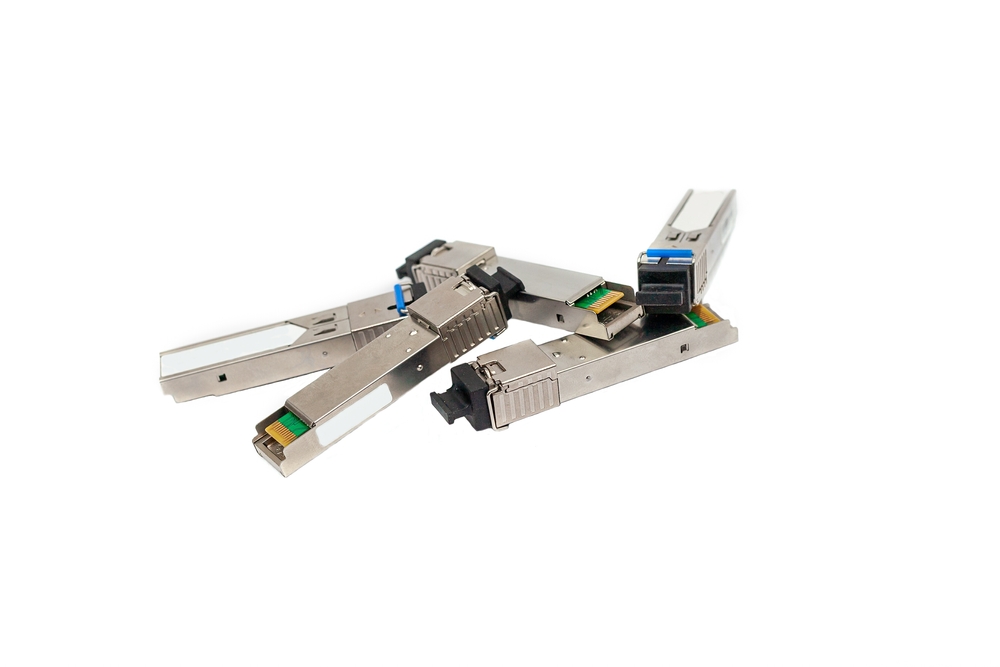In the realm of IT hardware, transceivers play a crucial role in ensuring seamless communication within network systems. These essential devices convert electrical signals into optical signals and vice versa, allowing data to travel over various media, including fiber optic cables and copper wires. This article explores the importance of transceivers, their types, applications, and their impact on networking technology.
What is a Transceiver?
A transceiver, short for transmitter-receiver, is a device that can send and receive data signals. In networking, transceivers are pivotal for facilitating communication between different devices. They are often used in conjunction with other hardware components such as switches, routers, and network interface cards (NICs) to enable effective data transmission over local area networks (LANs), wide area networks (WANs), and even the internet.
The Role of Transceivers in Networking
Transceivers serve multiple purposes in networking. They are responsible for:
- Signal Conversion: Transceivers convert electrical signals into optical signals and vice versa. This capability allows data to be transmitted over long distances without significant loss of quality or speed.
- Protocol Support: Different networking protocols require specific signal types. Transceivers are designed to support various standards, ensuring compatibility with different networking equipment.
- Distance Management: By converting signals, transceivers enable communication over various distances. This feature is essential in environments where devices are spread across large areas, such as corporate offices, data centers, and campuses.
- Network Expansion: Transceivers can help expand networks by allowing additional devices to be connected without requiring extensive changes to the existing infrastructure.
Types of Transceivers
Transceivers come in several types, each designed for specific applications and environments. Understanding these types is essential for selecting the right Transceiver for your networking needs.
1. SFP (Small Form-factor Pluggable)
SFP transceivers are compact devices used in optical networks to connect switches and routers. They support various data rates and distances, making them versatile for different applications. SFP transceivers are hot-swappable, allowing for easy replacement without shutting down the entire network.
2. SFP+ (Enhanced SFP)
SFP+ transceivers are an advanced version of SFP, designed to support higher data rates, typically up to 10 Gbps. They are commonly used in high-speed data centers and enterprise networks, offering enhanced performance for demanding applications.
3. QSFP (Quad Small Form-factor Pluggable)
QSFP transceivers can transmit multiple data signals simultaneously, making them ideal for high-bandwidth applications. They are widely used in data centers for connecting switches and servers, with data rates that can exceed 40 Gbps.
4. GBIC (Gigabit Interface Converter)
GBIC transceivers were widely used before the advent of SFP. While they are larger than SFPs, they serve similar functions by enabling gigabit-speed connections. GBICs are gradually being phased out in favor of more compact solutions like SFP.
5. XFP (10 Gigabit Small Form-factor Pluggable)
XFP transceivers are designed for 10 Gbps applications, commonly used in optical networks. They support long-distance communication and are typically used in metro networks and data centers.
6. CFP (C Form-factor Pluggable)
CFP transceivers are used for high-speed applications, such as 100 Gbps networking. They are larger than other transceivers but provide robust performance for extensive networks requiring significant bandwidth.
Applications of Transceivers
Transceivers are essential in various applications across different industries. Some of the primary applications include:
1. Data Centers
In data centers, transceivers connect servers to switches, enabling high-speed data transfer and efficient communication between devices. The choice of transceiver type impacts the overall performance and scalability of the data center.
2. Telecommunications
Transceivers play a crucial role in telecommunications networks, facilitating long-distance communication through fiber optic cables. They ensure high-quality signal transmission over vast distances, which is vital for internet service providers and telecommunication companies.
3. Enterprise Networks
Organizations utilize transceivers to connect multiple devices within their networks. This connectivity enables seamless communication, data sharing, and collaboration among employees, which is critical for productivity.
4. Industrial Automation
In industrial environments, transceivers facilitate communication between machines and control systems. They ensure reliable data transfer, enabling automation and monitoring processes in real time.
5. Military and Aerospace
Transceivers are essential in military and aerospace applications, where secure and reliable communication is paramount. They are used in various systems, including radar, satellite communication, and tactical networks.
Factors to Consider When Choosing Transceivers
Selecting the right transceiver for your Networking needs requires careful consideration of several factors:
1. Compatibility
Ensure that the transceiver is compatible with your existing hardware, including switches, routers, and network interface cards. Check the manufacturer’s specifications and guidelines to ensure seamless integration.
2. Data Rate
Choose a transceiver that supports the required data rate for your network. Higher data rates provide better performance but may come at a higher cost. Assess your current and future bandwidth requirements to make an informed decision.
3. Distance
Consider the distance over which the data will be transmitted. Different transceivers are designed for various ranges, so choose one that meets your needs. For long-distance communication, opt for transceivers designed for extended ranges.
4. Environmental Conditions
Evaluate the environmental conditions where the transceiver will be deployed. Some transceivers are designed for harsh environments, while others may only function optimally in controlled conditions. Choose a transceiver that meets the demands of your operating environment.
5. Budget
Finally, consider your budget. Transceivers come in various price ranges, and while it may be tempting to opt for the cheapest option, ensure that it meets your performance and compatibility requirements.
Conclusion
Transceivers are fundamental components of modern networking, enabling effective communication between devices and ensuring data is transmitted efficiently and reliably. With various types available, each designed for specific applications, understanding the role of transceivers in networking is essential for any IT professional. As Technology continues to evolve, the demand for high-performance transceivers will only increase, making them a crucial aspect of future networking infrastructure. Investing in the right transceiver not only enhances network performance but also supports scalability and adaptability in a rapidly changing technological landscape.




